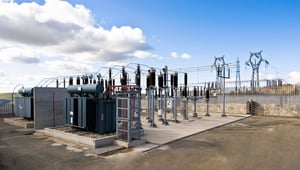A protection scheme to prevent explosions of current transformers (CT) has been developed by the Israel Electric Corporation (IEC). Although the number of explosions can be relatively small, the effects can be immense.
Senior specialists from the Central Electrical Laboratory examined the role partial discharge plays in CT explosions and how they could overcome the issue to develop a reliable protection mechanism.
Dissolved Gas Analysis (DGA) results were utilised to detect incipient faults that could be developing in CT insulation. The link between gas generation and partial discharge was further explored through real life case studies.
It was determined that the causes of gas generation in a CT can be the result of:
- Excessive current overheating paper insulation
- Weak lead connection overheating the oil
- Insulation change or damage causing partial discharge
- Open circuit on secondary windings
Understanding the explosion mechanism and when partial discharge is likely to occur enabled the researchers to develop an Open Secondary Circuit Protection device. The device has provided continuous and economical protection to their systems.
The device was field and lab tested, with field trials conducted to ensure the device was reliable and performed as it should. IEC’s long-term goal is to have the device available as a utility standard for the global market to help eliminate future CT explosions.
For further information on the research project and their findings.
Contact us for more information on DGA and other protection tools you can apply to your protection programs.
